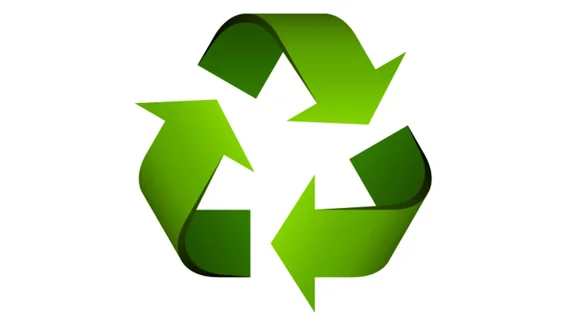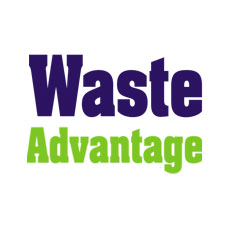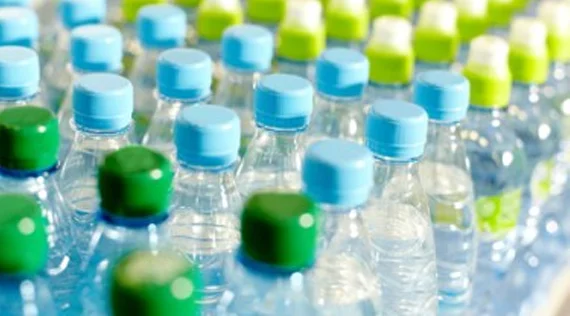Brave New World of Extended Producer Responsibility: Compliance Considerations or Affected Industries
August 13, 2025 02:05:13 AM
Notably, producers must comply with Oregon’s EPR law by July 1, 2025, to continue selling or distributing covered products in the state.

SEATTLE (Waste Advantage): Extended producer responsibility (EPR) programs are transforming the regulatory landscape across the U.S. State governments are shifting the onus of end-of-life product management from consumers and local governments to the companies that produce, distribute, or sell certain items.
As EPR programs expand, businesses across multiple sectors – including food and beverage, consumer goods, apparel, and logistics – need to evaluate their options to ensure compliance as part of the broader move toward circular economies. These programs are being rapidly adopted, and with more states expected to follow, they will have far-reaching impacts across the supply chain.
What Is EPR?
EPR or product stewardship programs aim to encourage product design changes that minimize environmental impacts, reduce landfill waste, promote recycling, and support recycling and materials management goals. Over the past decade, states have established EPR programs for batteries, paints, and pharmaceuticals, and, in recent years, packaging. EPR programs for packaging require producers (e.g., brand owners, licensees, manufacturers, and, in some cases, franchisors) to take responsibility for the waste generated by their covered products such as single-use packaging, food serviceware, and paper products.
Seven states—California, Colorado, Maine, Maryland, Minnesota, Oregon, and Washington—have enacted EPR legislation for packaging and other covered products, with Maryland (enacted May 13, 2025) and Washington (enacted May 17, 2025) the most recent additions to this growing list. Many other states are considering similar legislation or modifying existing measures, such as California’s proposed revised regulations under SB 54.
What Products Are Covered, Who Is Responsible?
One of the most challenging aspects of EPR programs is the variability in definitions and coverage among states. Understanding which products and companies fall under these laws is essential to complying.
What is a Covered Product?
EPR laws typically target a broad spectrum of products, and the new laws are focused on paper products (e.g., magazines, catalogs, and office paper); plastics (e.g., single-use utensils, plastic-coated food packaging, and food service trays); and packaging materials (e.g., protective bags, boxes, and bubble wrap).
Who is a Producer?
Definitions vary by state, but often include brand owners, importers, distributors, packaging manufacturers, and retailers. Some states, including Oregon, have enacted regulations aimed at upstream producers (such as manufacturers, brand licensees, and importers), while other states have focused more on brand owners and public-facing companies.
What Exemptions Exist?
Many states include exemptions based on annual revenue, volume of covered products sold in the state, or geographical limitations. Small businesses or low-volume producers might be exempt or subject to reduced fees, easing the compliance burden on emerging companies.
What Do These Laws Require?
EPR laws impose various obligations structured to shift the cost of waste to producers. Companies that produce, distribute, or sell covered products—items that fall within the law’s ambit—may be responsible for the following measures.
Joining a Producer Responsibility Organization
Companies must register with state-approved producer responsibility organizations (PROs), which manage the end-of-life processing of their products and assess fees based on the volume and type of covered materials distributed within the state. The formation and management of PROs vary by state.
Reduction Targets
California requires producers to reduce or eliminate the amount of non-recyclable or non-compostable materials they use by specific deadlines. Companies may need to reformulate products or packaging to meet these benchmarks. Other laws may be implicated in this as well, such as post-consumer recycled laws in California, Washington, New Jersey, and Maine, which mandate the amount of recycled plastic that can be used in certain products.
Reporting and Labeling
Specific labeling may also be required under these laws. For example, Washington requires that producers label packages that contain plastic trash bags with certain information when selling or distributing them within the state. Companies may also need to report packaging data to remain in compliance with these new laws.
Stakeholder Engagement
In some jurisdictions, companies must work with local governments, recyclers, and other industry stakeholders regarding recycling infrastructure and public education initiatives.
Why Should Your Company Care?
Companies at all levels of the supply chain—from brand owners and manufacturers to distributors and importers—may be affected by the wide-reaching EPR packaging laws. Due to the patchwork of state requirements, companies’ obligations may vary by state and supply stream (e.g., direct-to-consumer or business-to-business). For example, while the obligated producer for certain packaging used to ship products via either e-commerce direct-to-consumer or business-to-business in Oregon could be the importer, in Minnesota, it could be the brand owner within the U.S., whereas in Colorado the U.S. manufacturer would be the obligated producer but only for the direct-to-consumer stream.
Penalties for noncompliance vary by state and range from $5,000 to $50,000 per day/violation, and for subsequent violations can go up to $100,000 per day/violation. In addition, some states such as Oregon can take action to prohibit producers from selling or distributing covered products if they do not comply with the program requirements.
Industry stakeholders, including the Recycling Partnership and the Association of Plastic Recyclers, highlight that effective EPR programs can significantly enhance recycling infrastructure, increase recycling rates, and incentivize producers toward more sustainable packaging designs. By shifting financial responsibility to producers, municipalities could experience reduced costs and improved environmental outcomes.
These perspectives underscore the potential for EPR to catalyze innovation and foster collaboration across the supply chain, advancing broader circular economy goals. Yet, waste trade organizations also stress that EPR programs must be clear, account for a variety of stakeholder interests, and align with existing recycling systems to ensure lasting success and prevent unintended disruptions.
What’s Next?
Several state programs have already been enacted, with compliance deadlines on the horizon. While some requirements will not take effect until 2026, 2027, or later, other states’ implementation dates are rapidly approaching.
Notably, producers must comply with Oregon’s EPR law by July 1, 2025, to continue selling or distributing covered products in the state. Maryland’s recently enacted EPR law also has impending compliance deadlines, requiring producers to enroll in a PRO by July 1, 2026. Similarly, Washington’s law mandates that producers designate a PRO by January 1, 2026, with all producers required to join a PRO by July 1, 2026.
California’s new proposed regulations, released in May 2025, introduced important compliance developments that signal how states may shift implementation in response to stakeholder input. Among other changes, the updated rules provide clarified definitions of “covered materials,” including specific categories of plastic single-use food serviceware, which producers should carefully evaluate for compliance planning. Additionally, the revisions expand exemptions for certain single-use packaging, such as packaging for medical devices and drugs, and packaging required to comply with FDA or USDA standards, reducing regulatory overlap and compliance complexity.
EPR programs may be coming to other states as well, and ten additional states are actively considering legislation on EPR for packaging. Given these rapid developments, it is critical for companies to stay informed of the changing legislative and regulatory landscape and evaluate the applicability of the EPR laws to their businesses.
Courtesy: www.wasteadvantagemag.com
 By
By 



